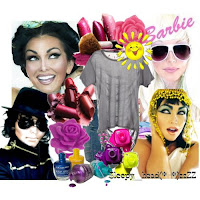


Do you remember your first Halloween, or maybe that ratty old blanket you dragged with you everywhere as a child? What about your prom dress, or that expensive silk scarf that you wore once before it tore? What ever happened to that perfectly pink sweater that you grew out of or the pants that you shrunk in the dryer? Those items most likely ended up in the trash and in some cases burned (think that old blanky your mother loathed), but for some, these scraps of clothing have become very resourceful.
A good quilter is able to take pieces of old clothing/fabric, and put them to use in what can be a beautiful, but always-resourceful creation. Today you may think of a quil, as a store bought product made of beautiful complementary colors and patterns, but this notion is not a true representation of what a quilt really is. Quilts were once (and often still are) made of recycled fabrics in order to create an item that was useful in many ways. The quilt is a utility of warmth as well as a way to recycling and even holding onto memories of the past. In fact, often times quilts are used for this exact purpose: to (in a sense) “scrapbook” memories whether it is with the old fabric from the couch of your childhood, or that sparkly tutu you never took off.
In the Nelson Art Gallery on the UC Davis campus, one particular exhibit pays special tribute to these used scraps of cloth, commemorating a tradition that has been around for centuries. The exhibit showcases the works of African American quilters. Each quilt is unique in its own way, but one variable remains the same among all. Every quilt in the exhibit is an example of sustaining resources.
More elaborate quilts generally attract more attention because of the vibrant colors and striking patterns, while the simpler quilts at a glance can appear dull. It is easy for the viewer to make this assumption hastily, but with a more attentive eye, it is easy to be drawn to the quilts, which initially look dull. Each quilt has its own unique pattern varying in shapes, textures, and colors. While some quilts illustrate a history, others represent the essence of a quilt: Warmth.
One particular quilt, which stood out amongst the rest, was an amorphous shaped quilt. Its obvious was purpose was not to construct a masterpiece, but to create warmth. No particular pattern was applied to the work, but the way the bland colors collaborated seemed to create a unity in the amorphous variety. While the quilts general color scheme seemed to be neutral the varied fabrics seemed to create interest. While some of the quilt was made up of apparently old tablecloths, scuffed wool was also incorporated into the quilt creating an air of reminiscence of its past.
Can you remember the last time you cleaned out your closet, and how much clothes you threw out? Now think about your entire life’s worth of clothes thrown out of your closet. Remember the history of the jeans you wore during your first kiss, or the jumper you wore on the first day of school. The entire idea of a quilt is to capture these moments. It is amazing how a simple piece of needlework can take on so much meaning and express so much history.
2nd quilt middle top row: http://www.kathyscustomcreations.com/images/memory_quilt_four_kids_pix.jpg
1st quilt top left: http://www.quiltopiadesign.com/quilts/gallery/
3rd quilt bottom middle: nelsongallery.ucdavis.edu (part of African American Quilt Exhibit)


















































